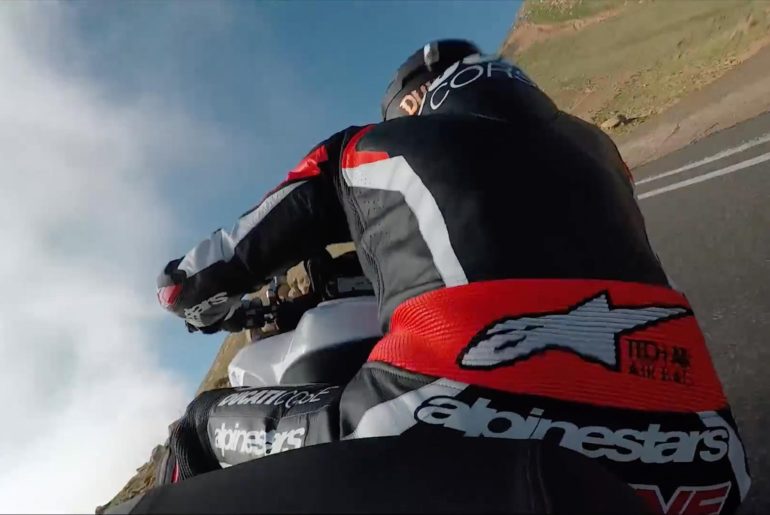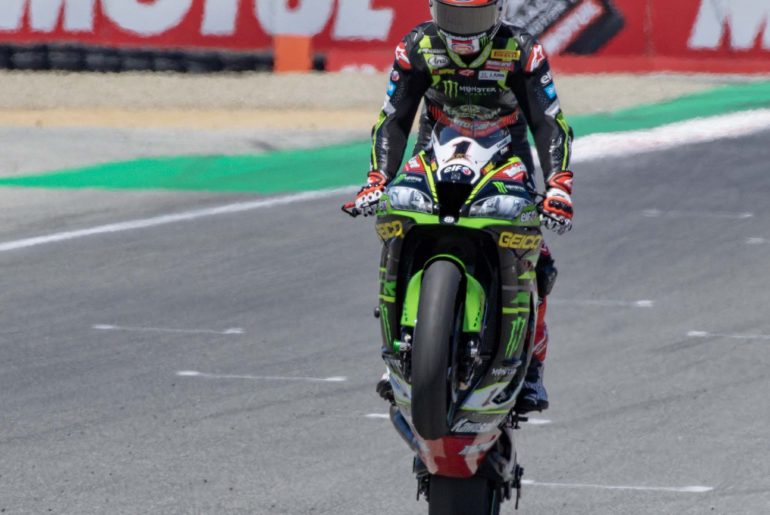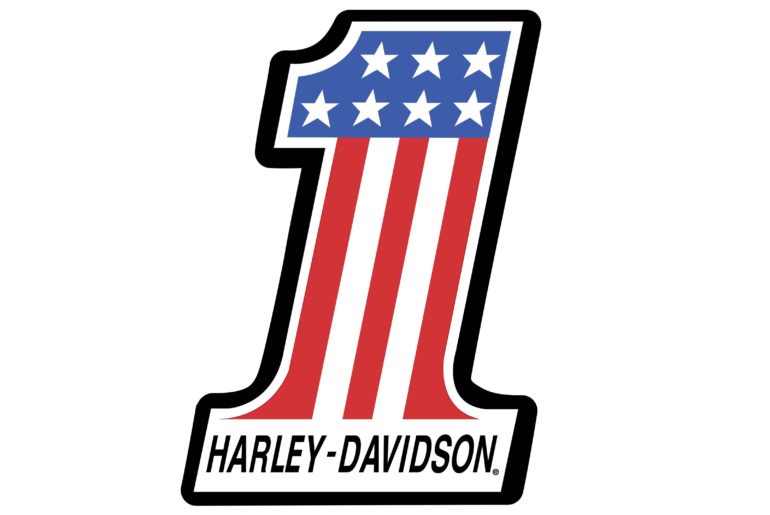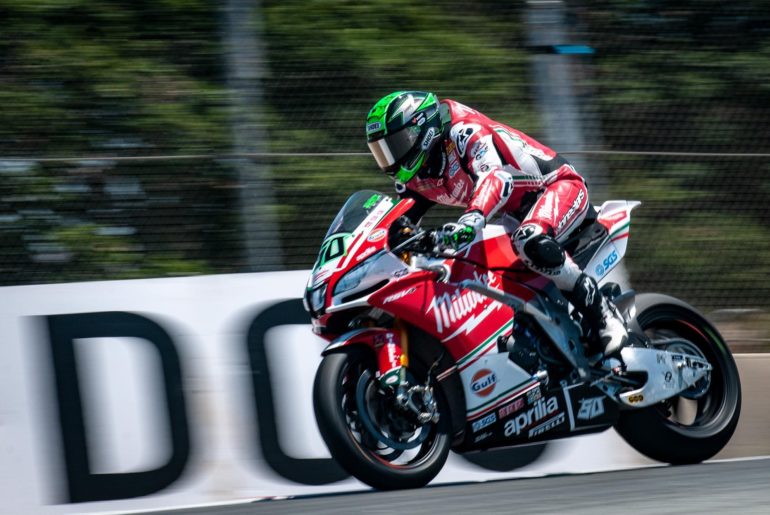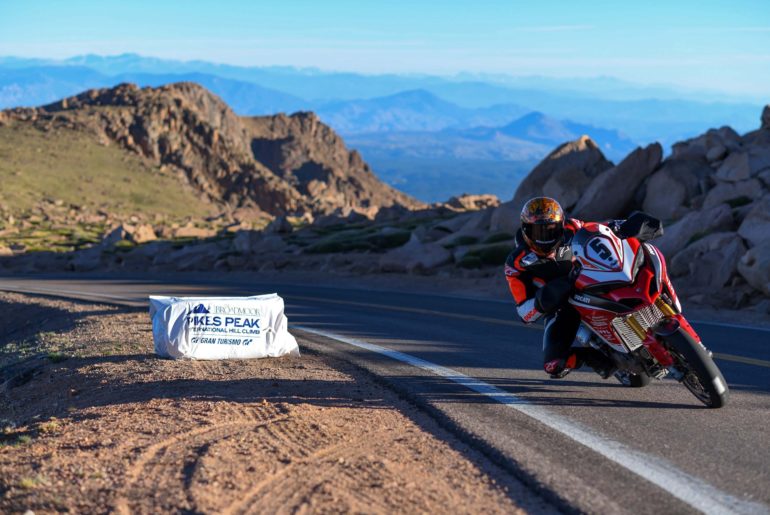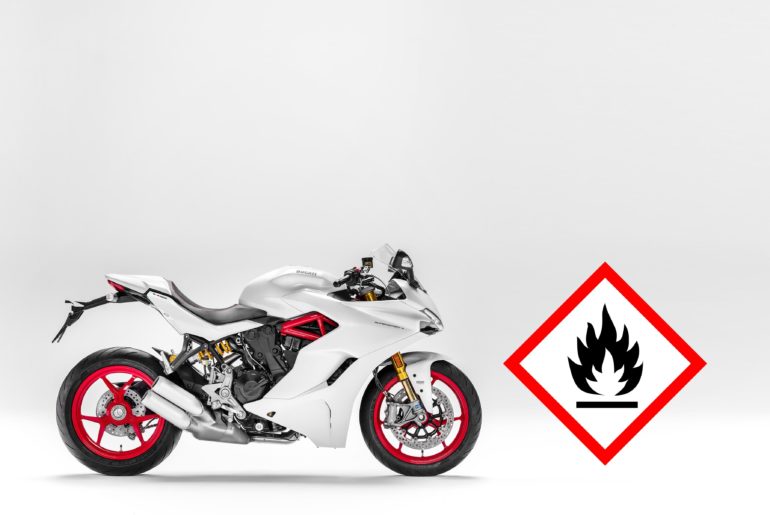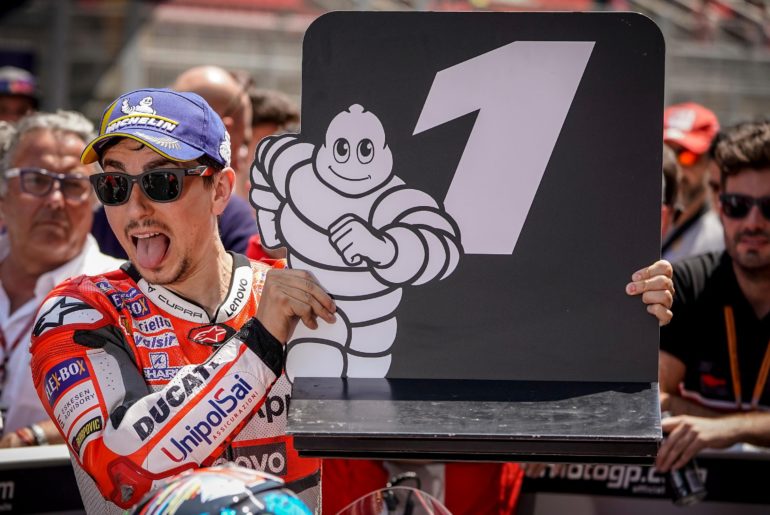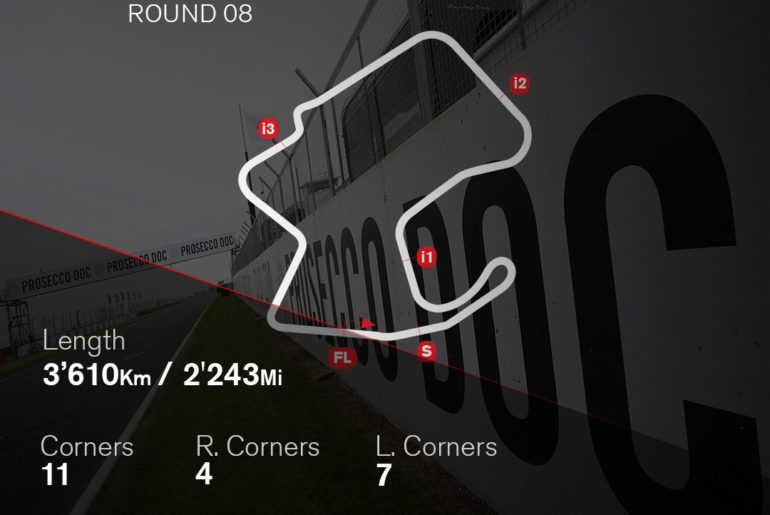The tale of the TT Circuit at Assen is really the tale of Grand Prix motorcycle racing.
That is hardly surprising, given that the race has featured on the calendar since Grand Prix racing was born, or rather, since the FIM Motorcycle Grand Prix Road Racing World Championship was established, back in 1949. And like Grand Prix racing, it has roots which go back a long way before that.
The first race took place in 1925, a year after the Dutch government passed a law permitting racing on public roads. It ran over cobbled roads and sand tracks between three villages to the east of Assen: Rolde, Borger, and Schoonlo.
The next year it moved south of Assen, again over public roads, between De Haar, Oude Tol, Hooghalen, Laaghalen, and Laaghalerveen. It stayed there until 1955, when the first sections of what would become the modern circuit were built.
The roads were closed and the circuit was separated from the world, an isolated loop of tarmac, where racing was safer, easier to organize, and, not coincidentally, easier to monetize.
The inaugural Grand Prix season in 1949 took place mainly on circuits set out using public roads, which made for long tracks taken at high speed (Bremgarten in Switzerland and Monza in Italy were the two purpose-built circuits on the calendar, but Bremgarten, in particular, was a spectacularly dangerous circuit which wound through a forest).
A Changing Environment
As public attitudes to risk changed, so circuits changed, and Assen was no exception. Road surfaces were changed, from cobblestones to asphalt. The public road sections were closed, and a purpose-built circuit laid out around them.
No longer would the riders have to contend with practice on roads which were still open and in use by the public, nor worry whether farm gates had been closed, allowing sheep or cattle to wander onto the track.
Trees were removed, grandstands built, the circuit widened. Crowds were moved away from the circuit, and the edge of the track underwent several metamorphoses.
From grass verges were slowly replaced by gravel, kerbs were added, artificial grass replaced gravel in places, additional asphalt run off was laid in some corners. Barriers were added, then air fence in front of the barriers.
At the GT Chicane, a new ‘floating’ grandstand was built, creating more runoff underneath the grandstand, while keeping spectators close to the action. The circuit is an almost infinitely safer place than either the original in 1925, or the track which hosted the first Grand Prix, back in July of 1949.
And yet it retains a lot of its essential character, despite having undergone such radical change in the space of so many years. Like Grand Prix motorcycle racing: then, as now, a balance between rider and machine, where the rider counts just a little bit more.
Assen, in 1925 and in 1949, ran over roads forged by the idiosyncrasies of the physical geography and economic history of this part of The Netherlands.
Roads built along the creeks and brooks which sprung up when the peat was removed in previous centuries, as they meandered over a landscape which is almost, but not quite flat.
A Sense of Place
Go for a ride along the small farm roads in the surrounding countryside, and you will get that same sense of a circuit, of snaking straights, fast kinks, and flowing corners. Roads flick fast left and right from one side of a creek to another, just like Hoge Heide.
Or they turn left or right, following a bend in a brook, long and shallow corners taken at high speed, like Duikersloot, Meeuwenmeer, Ramshoek. And they never follow a simple straight line, like the Veenslang, or the section from Stekkenwal to De Bult.
In 2006, the circuit underwent its most radical change. The iconic North Loop section was removed, shortened, Bowdlerized, in response to two threats. First, to raise money for the circuit, the land sold to a developer.
Second, as the city of Assen expanded to the south, the noise of a circuit impinged on the sensibility of new residents. A new, much shorter, much tighter loop took its place, ripping out the heart of the circuit.
Yet Assen remains Assen. From the end of the new North Loop at the Strubben hairpin to the start of the new North Loop at the Haarbocht, Turn 1, the track is still utterly glorious and challenging.
The Veenslang back straight is still anything but straight, and the entry to the Ruskenhoek is as terrifying as it ever was. The Stekkenwal and De Bult are just as challenging, and then the riders head into one of the best sections of track on the calendar.
From Mandeveen to Hoge Heide, the bikes gather momentum, always on the right side of the tire. Then the fast flick of Hoge Heide, almost a chicane taken at over 250 km/h, which lifts the bike over the crown of the asphalt.
Then left again, for the first time in a kilometer, at the brutally fast Ramshoek. And the GT Chicane, a test of skill, bravery, and cunning, a place where many a battle has been fought, many a race decided.
Every circuit should have a final corner or final section where races can be decided, and Assen’s GT Chicane is among the very best.
(Un)happy Anniversary
This year, Assen marks a couple of special anniversaries. It is the 70th time a Grand Prix has been held at the circuit, or its modern incarnation. It is also the last circuit at which a Yamaha won a MotoGP race.
Since the 25th of June, 2017, when Valentino Rossi held off Danilo Petrucci to take victory in a thrilling battle, Yamaha have gone 17 races, and over a full year, without a win.
Since that day, Valentino Rossi and Maverick Viñales have 10 podiums between them, including 3 third places, but they have been unable to win a single race.
Why? That is a hard question to answer, but in the end, like everything in motorcycle racing, it all comes down to tires. Since the switch to Michelins, Yamaha have never quite managed to get everything out of the Michelin rubber.
This is partly down to chassis design, partly down to electronics, and partly down to Yamaha’s philosophy of evolution rather than revolution: the 2018 Yamaha YZR-M1 still bears an awful lot of resemblance to the bike on which Valentino Rossi made his debut at Yamaha in 2004.
The Ducati, Suzuki, and to a lesser extent, Suzuki, all look very different to those bikes.
But if there is one place where a Yamaha could break the losing streak, it is Assen. It remains a rider’s track, a place where skill and bravery can gain you time which weaker equipment might otherwise take away from you.
And Valentino Rossi is the king of Assen, having won here seven times in the past, including last year. The track suits both him, and the nature of the Yamaha, which is strongest in maintaining corner speed.
From the Strubben to the GT Chicane, fast corners are just about all there are at Assen. Rossi remains Yamaha’s best hope of ending an inglorious streak.
Keeping Up Relations
In theory, Maverick Viñales should also be strong at the Dutch circuit. Before he moved up to MotoGP, the Spaniard finished either first or second at the track. Since ascending to the premier class, his luck has changed, Viñales struggling to make a mark, especially after qualifying poorly.
Viñales is growing increasingly frustrated with his team, and with the bike, which is not making the challenge any easier for him.
In an interview with the Spanish sports daily Marca, he said he felt the team were not always fully behind him. That is a dark place for a racer to be. He will need a clear mind to attack the Dutch track, and to put his preconceptions behind him.
Yamaha’s dark horse – as ever – is Johann Zarco, though how delighted the factory team would be if a satellite rider were to beat them is open to question. The Frenchman is coming off three poor to mediocre races.
He crashed out at his home race, unsurprising given the pressure on his shoulders there. At Mugello he struggled, at a track he has always struggled at in MotoGP, and at Barcelona he got caught up in traffic and never made the progress he hoped for.
Assen should be better for the Monster Tech3 Yamaha rider. After finishing first and second in his final two years in Moto2, Zarco started last year’s race from pole. He was eventually defeated by the weather, spooked by drops of rain forcing him into the pits, a decision which turned out to be a mistake.
This year’s forecast is for dry, sunny weather, rules out any chance of a repeat of that, so it will be up to Zarco to try to grab that first win which he has looked so close to getting for so long.
Breaking the Curse?
The fine weather will come as a great relief to Jorge Lorenzo. Since his massive crash in 2013, where he broke his collarbone in free practice, flew to Barcelona to get it plated, then flew back to finish fifth in the race, Assen, especially when it’s damp, has been Lorenzo’s kryptonite.
But the Spaniard is coming off two back-to-back victories on the Ducati, and enters the weekend looking stronger than ever.
But Assen has not been kind to the Italian manufacturer. Ducati have won here only once, in 2008, when Casey Stoner imposed his will on the field. But things have been looking up in recent years.
A Ducati has been on the podium in three of the last four races, between 2014 and 2017, with Andrea Iannone finishing fourth in 2015, the only time they missed out.
The bike is starting to turn better, and Assen bears enough resemblance to Mugello in terms of fast flowing corners that it could yet be competitive.
That will also spur Andrea Dovizioso on to action. The Italian has lost his way in recent races, crashing out through his own fault at Le Mans, then again at Barcelona. At Mugello, he was beat fairly and squarely by his teammate, and he now stands level on points with Lorenzo.
If Dovizioso is to have any hope of mounting a title challenge once again, he needs to get his season back on track, and he needs to start at Assen.
Then there’s Danilo Petrucci and Jack Miller in the Alma Pramac squad. Two riders who have a strong record at Assen, Miller having won here in the wet. The pressure is off for the Pramac pair, their futures now both secure.
Entering Assen feeling free to race without too much worry is a liberating experience, and just what will be needed to challenge for podiums and victory.
Mr. Invincible
Of course, when it comes to victory, there is one man whose name cannot be overlooked. Marc Márquez leads the championship comfortably, and has won three of the first seven races.
Honda have got the engine in the RC213V right at last, and Márquez is reaping the rewards. The bike is outstanding at some circuits, and good enough at others, making it possible for Márquez to limit the damage when he can’t win outright.
Assen is a track where he has always been strong. The last time Márquez finished outside the podium at Assen was in 2009, he second season in Grand Prix racing.
Since then, he has won four times, including once in MotoGP, and always ended on the rostrum. With a better bike and good weather, it is hard to see Márquez not extending his championship lead at Assen.
This will be a big weekend for his teammate, Dani Pedrosa. The Repsol Honda rider made progress at the Barcelona test, and has been on an upward curve since the start of the season. He may be out at Honda, but he is still clearly competitive.
Of course, what the world is waiting for is an announcement on his future, and the inclusion of Pedrosa in the press conference suggests he may have news to tell us.
However, despite the fact that the Petronas Yamaha deal is now certain, there are still pieces to be shuffled around, meetings to be held, agreements to be reached. It is likely that we will once again be left hanging, at least until the Sachsenring.
Cal Crutchlow could also put on a show at Assen. Though the LCR Honda rider only has a single podium at the Dutch track, he is often there or thereabouts, only missing out on a second podium last year when he was bumped to fourth by Marc Márquez.
Crutchlow already has a victory in 2018, and has been close to the podium twice more. The Englishman will surely feature on Sunday.
Blue Wave?
If agility is key at Assen, it should be cut out for Suzuki. Both Andrea Iannone and Alex Rins have had podiums so far this year, and the nature of the Dutch track should suit the GSX-RR down to the ground.
Coming off a miserable race in Barcelona, they can look back to Mugello for inspiration, where Iannone and Rins finished fourth and fifth, and within spitting distance of the podium. A repeat of that, or even better, should not be out of reach for the Suzuki team.
Aprilia, where Iannone heads next year, will once again be focused on trying just to score a decent result. Scott Redding, having learned he has lost his job, must try to figure out what he wants to do for next season, now that there is no place for him in MotoGP.
A good result – just putting everything together in every session for a whole weekend – would go a long way to helping him make a decision or find a new home.
Aleix Espargaro must hope that the bike will hold together, and not suffer a technical problem as he has too often in the past. Espargaro knows that he is capable of a good result, and Assen is a track where that could be possible. But first he has to finish.
Younger brother Pol Espargaro faces a much tougher weekend, as does Red Bull KTM teammate Bradley Smith.
As the only bike with a crankshaft that spins forwards rather than backwards, the KTM RC16 is less willing to change direction rapidly, the gyroscopic forces of the crankshaft amplifying rather than countering the same forces in the wheels.
Assen is all about fast changes of direction, playing straight to the biggest weakness of the bike. A remedy for that may not come until Brno, or even the Austrian manufacturer’s home race at the Red Bull Ring in Spielberg.
Assen is a unique place, in many respects. Ancient, yet modern; flat, yet as challenging as a track with masses of elevation change. With nothing between the North Sea and the circuit but a row of dunes a hundred kilometers to the west, the weather can change in an instant, and the wind is always a factor.
But this weekend looks set to be stable and calm, with high temperatures and bright sunshine. Whatever the weather, a fantastic racetrack will almost certainly produce great racing. As it always does.
This article was originally published on MotoMatters, and is republished here on Asphalt & Rubber with permission by the author.






























